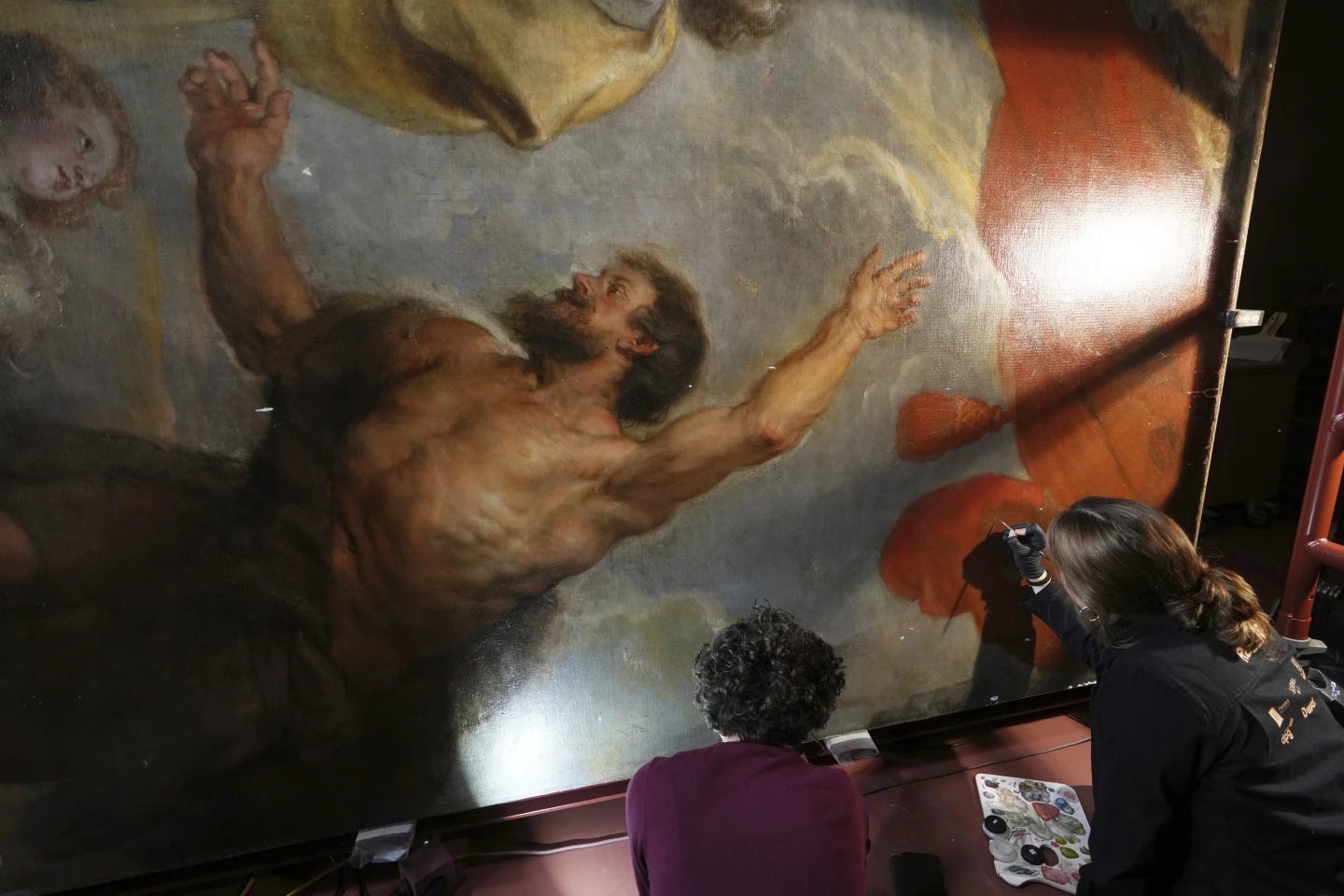Restoring Rubens: A Monumental Task for Art Experts
ANTWERP, Belgium (AP) — When it comes to restoring iconic works of art, it's common practice to move the painting to a secluded studio. But when a monumental Peter Paul Rubens masterpiece required attention, the studio was brought to the painting.
At the Royal Fine Arts Museum in Antwerp, home to Rubens’ masterpieces, a team of six restorers is working in plain sight of visitors, restoring “The Enthroned Madonna Adored by Saints,” a massive 6-meter (19.6-foot) Baroque piece. Set in the museum's largest room, this grand work, completed by Rubens in 1628, is now undergoing a two-year restoration, scheduled for completion this fall.
The painting, a stunning swirl of fabric and flesh, is taller than an adult giraffe, and it’s a far cry from the speed at which Rubens himself worked. The artist could complete such a massive painting in a few weeks, but for modern restorers, the process is much slower.
“It’s such a flamboyant painter that, yeah, we love it,” said Ellen Keppens, one of the six women leading the restoration team. Along with her twin sister, Jill, Ellen is part of the international team dedicated to reviving the Baroque masterpiece.
On a recent morning, the team was busy applying the base layers of paint, often contorting themselves into difficult positions to reach every corner of the massive artwork. "Like our colleague says, she’s become really good at yoga,” Keppens joked. “You notice that you can bend in all kinds of angles in front of a painting.”
As the restoration unfolds, the team is also mindful of another massive Rubens painting, “The Adoration of the Magi,” positioned at the other end of the Rubens gallery. This iconic work also needs extensive restoration, and Koen Bulckens, the museum’s Baroque curator, is preparing for the challenge.
“We will use this studio now for the treatment of this work,” said Bulckens, as he stood by the restored Madonna, the original brightness of the paint now revealed after the removal of yellowed varnish. “Then comes ‘The Adoration of the Magi,’” he added, noting that the project is expected to conclude in 2027, coinciding with the 450th anniversary of Rubens’ birth.
Like many centuries-old masterpieces, Rubens’ paintings face common issues: layers of old varnish and previous restorations that have damaged the works. "This painting was covered by a very exceptionally thick and yellow varnish, which distorted the colors and brushwork," Bulckens explained.
The varnish’s removal left the surface looking dull, which worried some visitors who feared the painting was being ruined. Despite signs instructing visitors not to disturb the restoration process, many questioned the choice. “Some absolutely don’t realize it. And then they think, like, was it a good idea?” Keppens said. “Yes, of course it was a good idea. We know what’s going to happen next.”
For the team, standing up for Rubens — and their own work — has become second nature. After months of working closely with the artist's masterpieces, Keppens reflects, “He is a very large part of our lives.”


